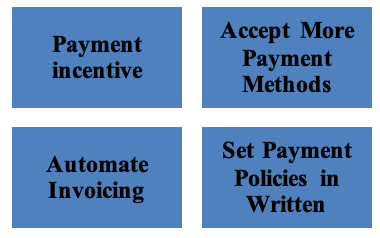Are you having difficulties collecting receivables? If so, you are on the right blog to get desirable information. We will discuss ways to improve your receivables collection in this article. Even if your company has consistent sales and growth, cash flow problems can slow them. Having enough cash flow allows you to keep growing. If you want to buy a company’s building to generate another source of income or upgrade your company’s technology, you will need a good cash flow. Effective account receivable management for small businesses includes a formalized procedure for collecting unpaid invoices. They also have strategies for identifying potential cash flow issues and addressing them timely.
Difference b/w accounts receivable and account payables:
Amounts owed to a business for goods or services are known as accounts receivable (a/r). Usually, this money is collected within a few weeks and shows as an asset on the business’s balance sheet. A customer account or invoice in A/R is outstanding and has not yet been paid. This money is expected to come from vendors or partners. It is frequently included in future cash flow projections.
Accounts payable is the opposite term of accounts receivable. Accounts payable are the funds owed by the company to third parties for services rendered. Despite their differences, accounts receivable and accounts payable are in cash flow. When a customer account or invoice is in a/r, it is unpaid. However, this means the money needs to be deposited into the business account. The money is expected to come in from different sources. When a company can reduce the time, an invoice sits in a/r; it reduces bad debt, past-due receivables, and the possibility of late payments. This shortened payment processing time can help a business operate and grow.
Biggest challenges of the collection process:
You need a compelling accounts receivable process to be paid on time. Even though having a long list of customers is fantastic, your business may suffer if they don’t pay you. Before starting any company in America, you should learn everything from account receivables to tiny things like the meaning behind the American flag. Let us take a look at the challenges encountered during account receivable collection.
- Receiving payment on time or within the agreed-upon terms.
- Getting paid/getting the money as opposed to receiving empty promises from customers.
- Maintaining positive customer relations with late payers
- Having sufficient time to manage the collection process
- When following up, reach the actual customers or the appropriate person
- Dealing with credit approvals and providing credit lines
- Collecting from customers who appear to be in default
- Resolving payment disagreements.
How to speed up the collection of account receivables?
You can’t process business without sorting the account receivable. You need money to pay employees and suppliers and manage paystubs. Let’s now look at how to speed up invoicing.

Payment incentives:
Offering payment incentives on invoices is the simplest way to get paid faster. Customers are encouraged to pay an invoice before the due date by offering early payment discounts. These terms are typically written in the format 1% 10 Net 30. However, the payer receives a 1% discount if payment is received within ten days of the invoice date. Otherwise, full payment is due 30 days after the invoice date. It is critical to seek advice from banking or industry professionals to determine whether this is a viable option for your company.
Accept more payment methods:
It is best to accept as many payment options as possible, including wire transfers, credit cards, conventional checks, PayPal, etc. The time it takes to receive payment, and its fees can differ. It depends on the payment method. On the other hand, your customers are likely to have a preferred payment method. Payers are constantly adopting new payment methods. Accepting payments via more methods allows your business to be more flexible and receive funds from customers faster. The more payment options you have, the better for increasing your company’s cash flow.
Automate your invoicing:
An invoice must be generated as soon as a service or product is delivered. An A/R software can assist this process through automation. It allows customers to be immediately notified that an invoice is prepared for payment. One significant advantage of software-based accounting systems is the automation of invoices. These can be sent directly to A/R departments. Automating your invoicing process allows you to send out scheduled payment reminders to your customers. These can be sent through email, text, phone calls, and other channels. Moreover, you can configure these solutions to make your AR process more efficient. For example, you can automatically contact accounts with the most outstanding days.
Set payment policies in writing:
Provide payment policies in writing at the start of a new business relationship. These must be included in the onboarding process. Customers can’t claim they misunderstood or were surprised by the payment terms this way. Clear communication is essential in determining the timeliness of payment. Be upfront about your payment expectations and ensure that the customer knows them. Setting clear deadlines and including late payment penalties on invoices helps avoid last-minute confusion. Contracts signed before the delivery of a product/service can help all parties involved. It helps to clarify expectations. A paper trail aids in the enforcement of contractual obligations for payment in advance.
Conclusion:
To survive, your company requires cash flow. If sales aren’t an issue, your collection process needs a relook. Collections are a complex and delicate process. However, it is critical to your business. Interactions with clients who are delinquent in their payments can be challenging and awkward. It can strain the relationship. This article will assist you in increasing your collection of account receivables without facing such issues.
